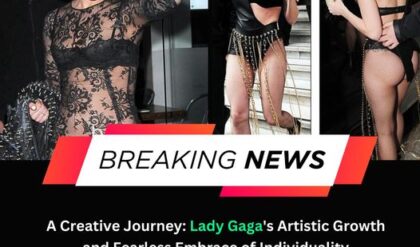The CSS Virginia was a Confederate ironclad warship that played a pivotal role during the American Civil War, most notably at the Battle of Hampton Roads in 1862.

Originally the USS Merrimack, a Union frigate, it was repurposed by the Confederates with iron armor, making it a formidable adversary against traditional wooden warships.
Its historic clash with the USS Monitor, the Union’s own ironclad, marked the dawn of a new era in naval warfare, highlighting the supremacy of armored vessels over their wooden counterparts.
Origins Of The CSS Virginia
The CSS Virginia’s history is a narrative of adaptation, repurposing, and a determined spirit of innovation. Originally, this vessel was not a Confederate warship but belonged to the Union as the USS Merrimack. Launched in 1855, the Merrimack was a testament to the capabilities of American shipbuilding.
As a wooden frigate, it was one of the shining jewels of the United States Navy, representing the peak of naval design and capabilities of its era.
With the outbreak of the Civil War, naval bases and their stationed ships became critical assets, contested by both the Union and Confederate forces.
The Gosport Navy Yard in Norfolk, Virginia, where the Merrimack was stationed, was one such pivotal location.
As Confederate forces approached in 1861, Union commanders faced a dilemma.
The risk of the Merrimack falling into Confederate hands was a significant threat; a captured vessel could be used against Union blockades or other naval assets.
To prevent this, Union forces made the strategic yet destructive decision to scuttle the ship, sinking it to deny its use by the enemy.
 Art work depicting the CSS Virginia.
Art work depicting the CSS Virginia.
However, the Confederates, upon seizing the Gosport Navy Yard, saw more than just a sunken ship; they saw potential.
Recognizing the value in its robust framework, they undertook the challenging endeavor of raising the Merrimack from its watery grave.
But the Confederacy’s ambitions did not stop at merely restoring the vessel.
They envisioned a transformation that would respond to the challenges of modern warfare and the dominance of the Union’s naval blockade.
This vision led to the bold decision to repurpose the Merrimack’s hull for a pioneering naval project: the creation of an ironclad warship.
The concept of the ironclad was relatively new, rooted in the idea that a ship armored with thick iron plates could withstand conventional artillery fire, essentially rendering it invulnerable to the weapons that dominated naval warfare at the time.
The Merrimack’s robust structure provided an ideal foundation for such an endeavor.
Design Of The CSS Virginia
Structural Design and Armor:
An ironclad, by definition, was armored with thick iron plates, providing it with a protective shell against enemy fire.
The CSS Virginia’s design took this principle to its zenith. Led by naval constructor John L.
Porter and engineer William P. Williamson, the Virginia was encased in two layers of 2-inch-thick iron plates, creating a formidable barrier against enemy projectiles.
This armor was not just an added layer but was integrally fused with the ship’s wooden structure, resulting in a unique blend of strength and buoyancy.
However, this armor also added significant weight to the vessel. To maintain the ship’s stability and prevent it from becoming top-heavy, much of its original upper structure was removed.
This restructuring ensured that despite its additional weight, the Virginia retained its nautical capabilities, able to maneuver in battle with relative ease.
 The casemate was made by layering 24 inches of oak and pine, topped with 2 inches of iron.
The casemate was made by layering 24 inches of oak and pine, topped with 2 inches of iron.
Armament Configuration:
The CSS Virginia was not solely reliant on its armor for dominance; its offensive capabilities were equally impressive. Its primary armament consisted of ten formidable guns:
Two 7-inch Brooke rifled cannons: These were advanced weapons for their time, offering increased range and accuracy compared to traditional cannons.
Six 9-inch smoothbore guns: Traditional but powerful, these guns provided the Virginia with a broad firing arc and substantial firepower.
Two 6.4-inch Brooke rifles: Similar to the 7-inch variant but slightly smaller, these rifles further enhanced the ship’s offensive capabilities.
This diverse artillery suite allowed the Virginia to engage multiple targets at varying ranges, making it a versatile combatant in naval skirmishes.
The Ram: A Blast from the Past
One of the most distinguishing features of the Virginia’s design was its iron ram, affixed prominently to the ship’s bow.
This weapon was a throwback to ancient naval warfare tactics when ships would ram into adversaries to cause damage.
In the gunpowder age, such tactics had become almost obsolete, but the Virginia’s designers believed that the ship’s armor provided a unique opportunity to revive this strategy.
The idea was simple: use the Virginia’s near-impervious armor to approach enemy vessels and then employ the ram to inflict catastrophic damage, piercing their hulls and potentially sinking them.
The Battle Of Hampton Roads
The Battle of Hampton Roads, fought over March 8-9, 1862, was not just another naval skirmish of the American Civil War; it was a turning point that would dictate the future direction of naval warfare.
This engagement, featuring the CSS Virginia and the USS Monitor, brought into sharp focus the game-changing potential of ironclads and underscored the waning relevance of traditional wooden warships.
On the first day of the battle, the CSS Virginia made its combat debut with dramatic effect.
The Union blockade at Hampton Roads was composed primarily of wooden warships, vessels that had dominated the seas for centuries but were ill-prepared for the challenges presented by ironclads.
The Virginia’s designers and crew were eager to test the ship’s capabilities against these traditional naval adversaries.
The results were both astonishing and brutal. The Virginia, leveraging its armor and formidable firepower, engaged the USS Cumberland and USS Congress, both prominent wooden ships of the Union fleet. In a display of raw power, the Virginia used its iron ram to pierce the hull of the Cumberland, sinking the ship and sending shockwaves through the Union naval command.
The USS Congress, witnessing the fate of its sister ship and unable to inflict significant damage on the Virginia due to its iron armor, faced a relentless barrage and was eventually set aflame, leading to its explosion.
These initial engagements underscored a grim reality for the Union: traditional naval tactics and wooden warships were ill-matched against the new breed of ironclad vessels.
 USS Monitor engaging with CSS Virginia.
USS Monitor engaging with CSS Virginia.
Enter the USS Monitor: Clash of the Ironclads
If the first day of battle showcased the Virginia’s dominance over wooden ships, the second day heralded a new era in naval warfare.
The Union had its own ironclad card to play: the USS Monitor.
Unlike the Virginia, which was a converted frigate, the Monitor was purpose-built as an ironclad, boasting a revolutionary design that included a rotating turret.
The engagement between the Virginia and the Monitor is often described as the first battle between ironclads.
This was a duel of near equals, with neither ship able to secure a decisive advantage.
Their shells bounced off each other’s armored hulls, and while they inflicted some damage, neither could land a crippling blow.
After hours of intense combat, the battle ended in a tactical stalemate.
Yet, this inconclusive duel had profound implications. It signaled the end of the era of wooden warships as the dominant force on the seas. The future belonged to iron and steel.
Legacy
The Virginia’s exploits, most notably during the Battle of Hampton Roads, sent ripples through naval command structures on both sides of the Civil War. However, its active service was surprisingly brief.
Threatened by Union forces and constrained by its deep draft, which prevented retreat up the James River, the Confederates faced the difficult decision of scuttling the very vessel that had provided them with a glimmer of naval superiority.
In May 1862, the Virginia met its end, not at the hands of the enemy but by its own forces, to prevent it from being captured.
 The scuttling of CSS Virginia.
The scuttling of CSS Virginia.
While this seemed a grim end for such a pioneering vessel, the Virginia’s legacy was already set in motion.
The Virginia’s confrontations at Hampton Roads were not just events of national significance but had international implications. Navies across the world took note.
The vulnerabilities of wooden warships were laid bare, and the tactical advantages of ironclads became undeniably apparent.
No longer could naval powers rely solely on traditional ship designs and tactics; the era of the ironclad had dawned.
Nations, both in the New World and the Old, began investing resources into researching and building their own ironclads.
The British Royal Navy, the dominant maritime force of the era, accelerated its ironclad program.
France, another major naval power, followed suit. The global race to construct armored warships had begun, setting the stage for the battleships and armored cruisers of the late 19th and early 20th centuries.
News
A Creative Journey: Lady Gaga’s Artistic Growth and Fearless Embrace of Individuality
The weirdness and craziness of star Lady Gaga’s outfits have been increasing every day. Even if she were dressed in rags and beggar clothes, no one would be surprised. Lady Gaga created her own unique, shocking fashion line that no…
Gaga’s Street Style: No Bras, Semi-Sheer Top, and Daring Daisy Dukes in NYC
Lady Gaga recently unveiled the much-anticipated track list for her latest album, Joanne, and she is certainly not shying away from the limelight. The singer was spotted in New York on Saturday confidently flaunting her unique fashion sense. Her daring…
VIDEO : Unexpected Flashback: Old Footage Resurfaces Showing Lady Gaga’s Unusual On-Stage Act with a Girl Vomiting on Her Chest
It’s come back up. A clip of a woman making herself vomit on Lady Gaga during her SXSW performance in 2014 has resurfaced online — and the bile hasn’t aged well. Gaga, 36, incorporated performance artist Millie Brown into her choreography…
My First Piano Teacher Was a Stripper’: Lady Gaga Reveals Dad Hired a Stripper as Her Music Teacher, Linking it to Her Signature Long Nails
Lady Gaga is one of the popular artists who’s known for image reinventions and musical versatility. She rose to fame with her debut studio album, The Fame in 2007 with its chart-topping singles Just Dance and Poker Face. She is not only…
20 Bizarre Photos Prove That Lady Gaga Is The Most Unhinged Fashion Icon Ever
One of the most iconic and multi-talented artists of our time, Lady Gaga, with worldwide hits such as Bad Romance, Judas, and Born This Way, is also known as a composer, an actress, and above all, a fashionista. Known as…
Lady Gaga Goes Makeup-Free for Oscars Performance, Letting People See the Real Her
Oscars executive producer reveals Lady Gaga decided to go makeup-free during her performance to show people the ‘real’ her. Featured Image Credit: ABC Yesterday (March 13), the musician stunned viewers with a performance of the Oscar-nominated song ‘Hold My Hand’…
End of content
No more pages to load











